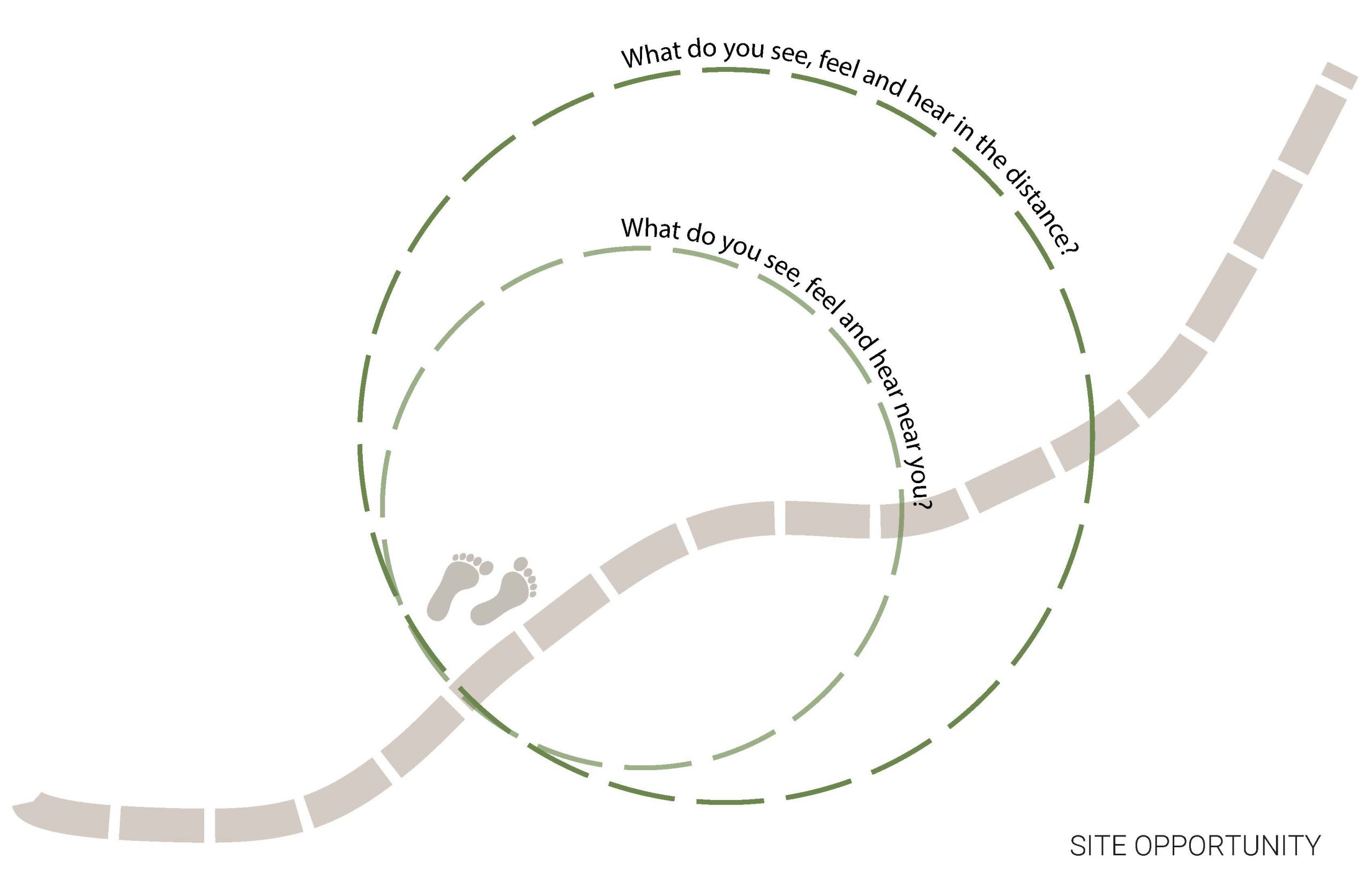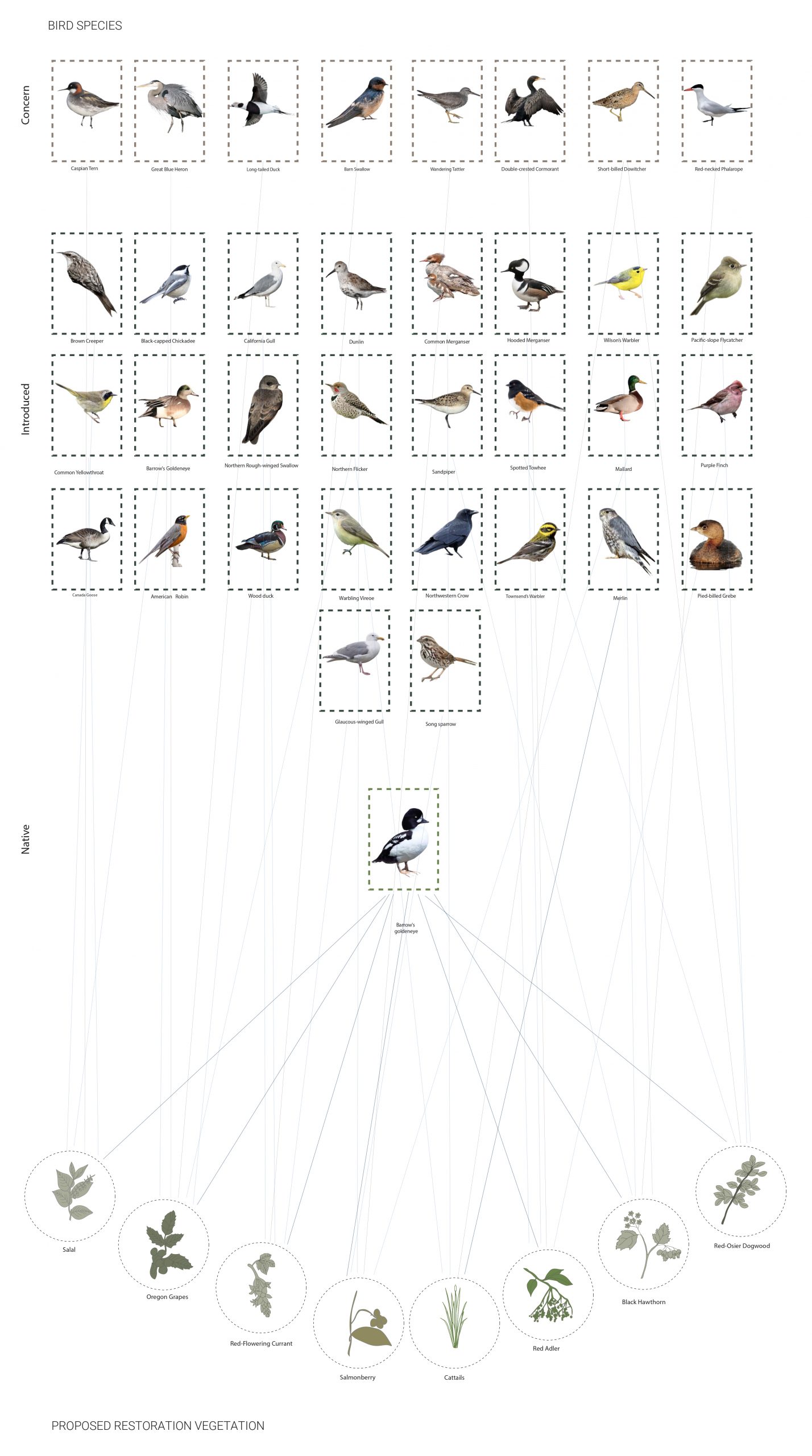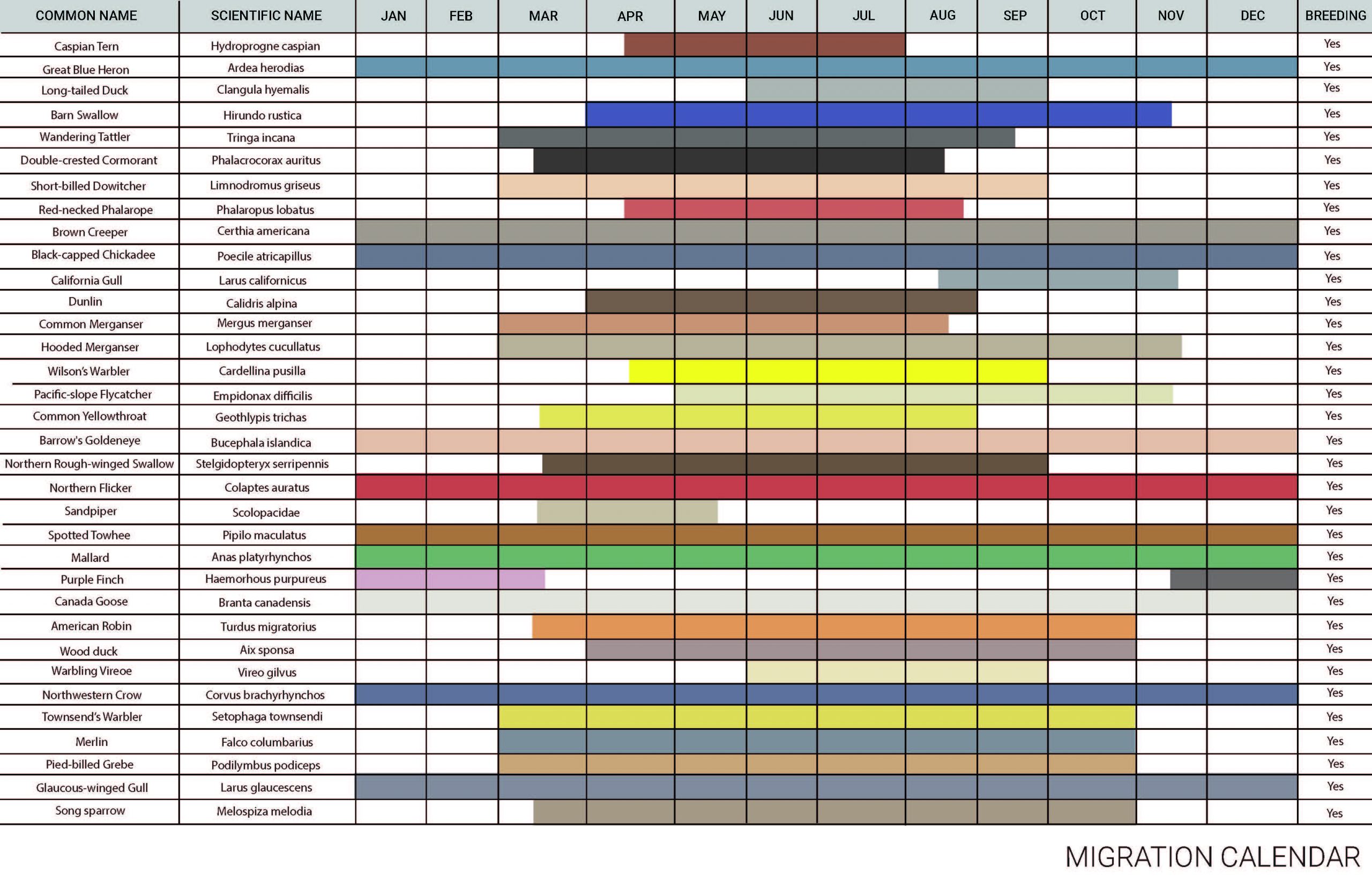 The animated images highlight various aspects of site observations highlighting key factors such as slope stability, duck and bird habitats, interactions between humans and birds, delineation between spaces that support different bird species versus those that do not, as well as instances of man-made infrastructure impeding avian habitation. The visuals underscore the importance of comprehensive evaluations in ensuring effective habitat preservation and mitigating potential adverse impacts on bird species. These also show future site opportunities that can facilitate better human-bird interaction and improve species habitats.
The animated images highlight various aspects of site observations highlighting key factors such as slope stability, duck and bird habitats, interactions between humans and birds, delineation between spaces that support different bird species versus those that do not, as well as instances of man-made infrastructure impeding avian habitation. The visuals underscore the importance of comprehensive evaluations in ensuring effective habitat preservation and mitigating potential adverse impacts on bird species. These also show future site opportunities that can facilitate better human-bird interaction and improve species habitats.
 This conceptual illustration guides us through a two-part process. In the initial phase, we engage in a sensory exploration of the environment, focusing on the auditory experience of bird calls, the tactile sensation of navigating through bushes where we can discern subtle movements of the birds, and the visual aspects of their elusive presence. The second part of the drawing introduces a visionary concept—a boardwalk equipped with bird blinds. This design aims to enhance bird habitat while fostering a harmonious connection between humans and birds. By providing a platform for observation, and exploration without disrupting the natural surroundings, the envisioned boardwalk serves as a testament to preserving and nurture the delicate balance of the avian ecosystem
This conceptual illustration guides us through a two-part process. In the initial phase, we engage in a sensory exploration of the environment, focusing on the auditory experience of bird calls, the tactile sensation of navigating through bushes where we can discern subtle movements of the birds, and the visual aspects of their elusive presence. The second part of the drawing introduces a visionary concept—a boardwalk equipped with bird blinds. This design aims to enhance bird habitat while fostering a harmonious connection between humans and birds. By providing a platform for observation, and exploration without disrupting the natural surroundings, the envisioned boardwalk serves as a testament to preserving and nurture the delicate balance of the avian ecosystem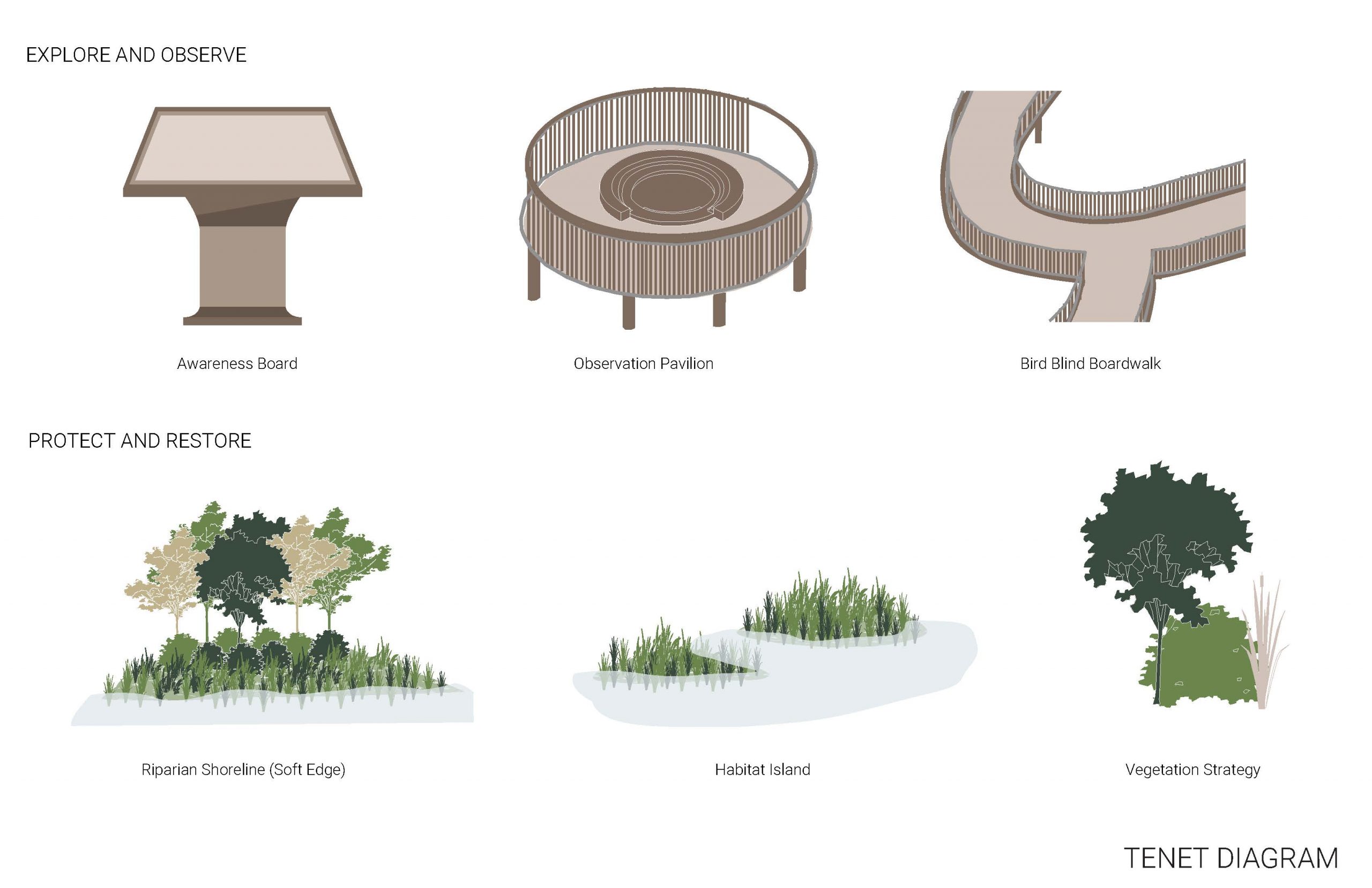 Our design principles center around the fundamental concepts of exploration and observation, as well as protection and restoration, striking a delicate balance between education and stewardship. The observation pavilion and boardwalk serve as dedicated spaces for immersing oneself in the rich tapestry of bird habitat, allowing visitors to keenly explore and observe these winged inhabitants. Complementing this experiential aspect is an education bulletin board, which imparts valuable insights into the diverse bird species populating the area.
Our design principles center around the fundamental concepts of exploration and observation, as well as protection and restoration, striking a delicate balance between education and stewardship. The observation pavilion and boardwalk serve as dedicated spaces for immersing oneself in the rich tapestry of bird habitat, allowing visitors to keenly explore and observe these winged inhabitants. Complementing this experiential aspect is an education bulletin board, which imparts valuable insights into the diverse bird species populating the area.
In tandem, our design incorporates a soft shore edge, small island habitats, and a meticulous planting strategy. These natural methodologies collectively contribute to the enhancement of bird habitat while concurrently working towards bettering the current ecosystem. By seamlessly integrating exploration, education, and environmentally conscious practices, our design aspires to foster a symbiotic relationship between humans and the avian ecosystem.
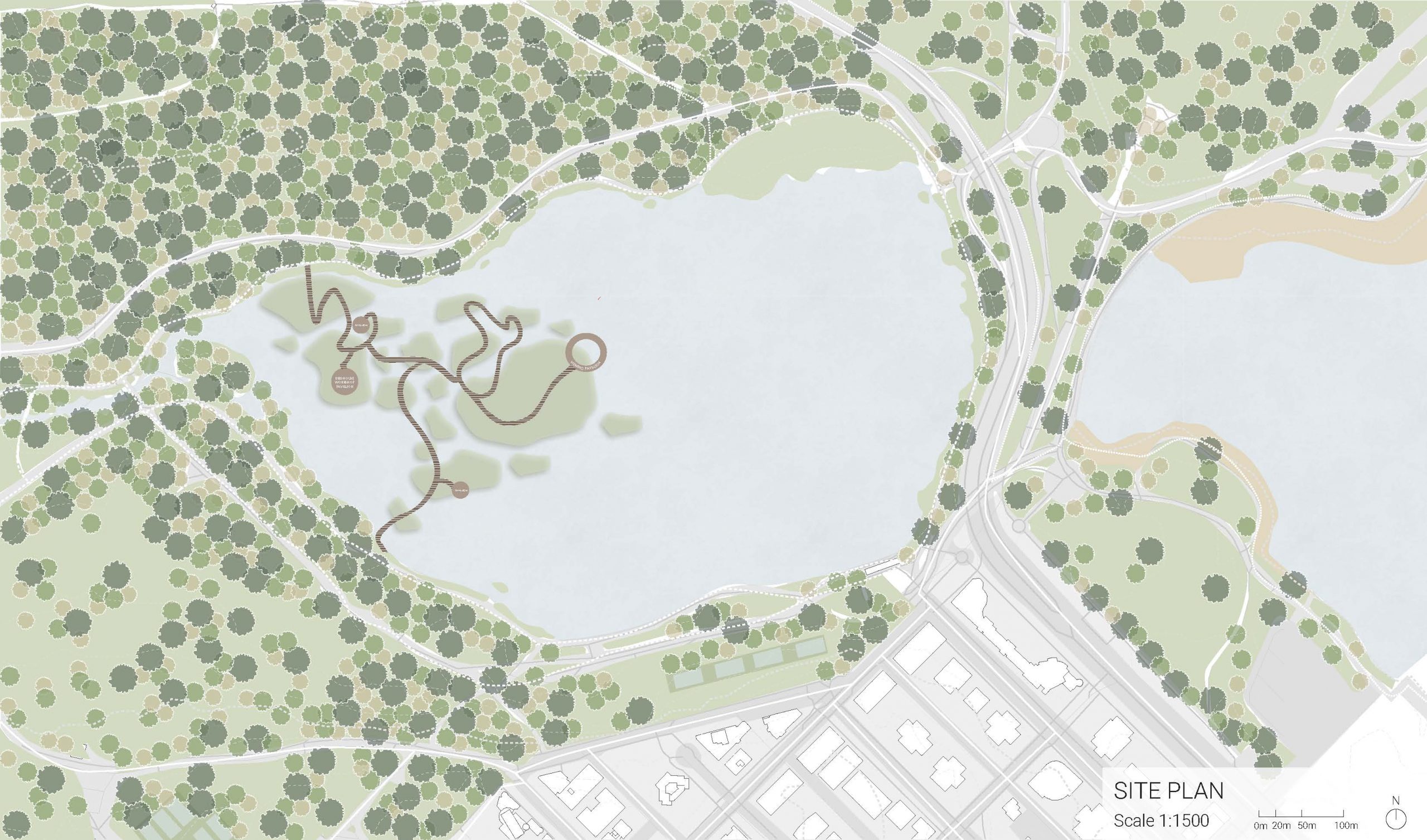 The schematic plan unveils the core design concept, providing a visual blueprint that encapsulates our overarching vision. It communicates the integration of pavilions, and the boardwalks strategically positioned to optimize the exploration and learning experience.
The schematic plan unveils the core design concept, providing a visual blueprint that encapsulates our overarching vision. It communicates the integration of pavilions, and the boardwalks strategically positioned to optimize the exploration and learning experience.
Moreover, the plan underscores our commitment to ecological stewardship by highlighting the implementation of a soft shore edge, and small island habitats.



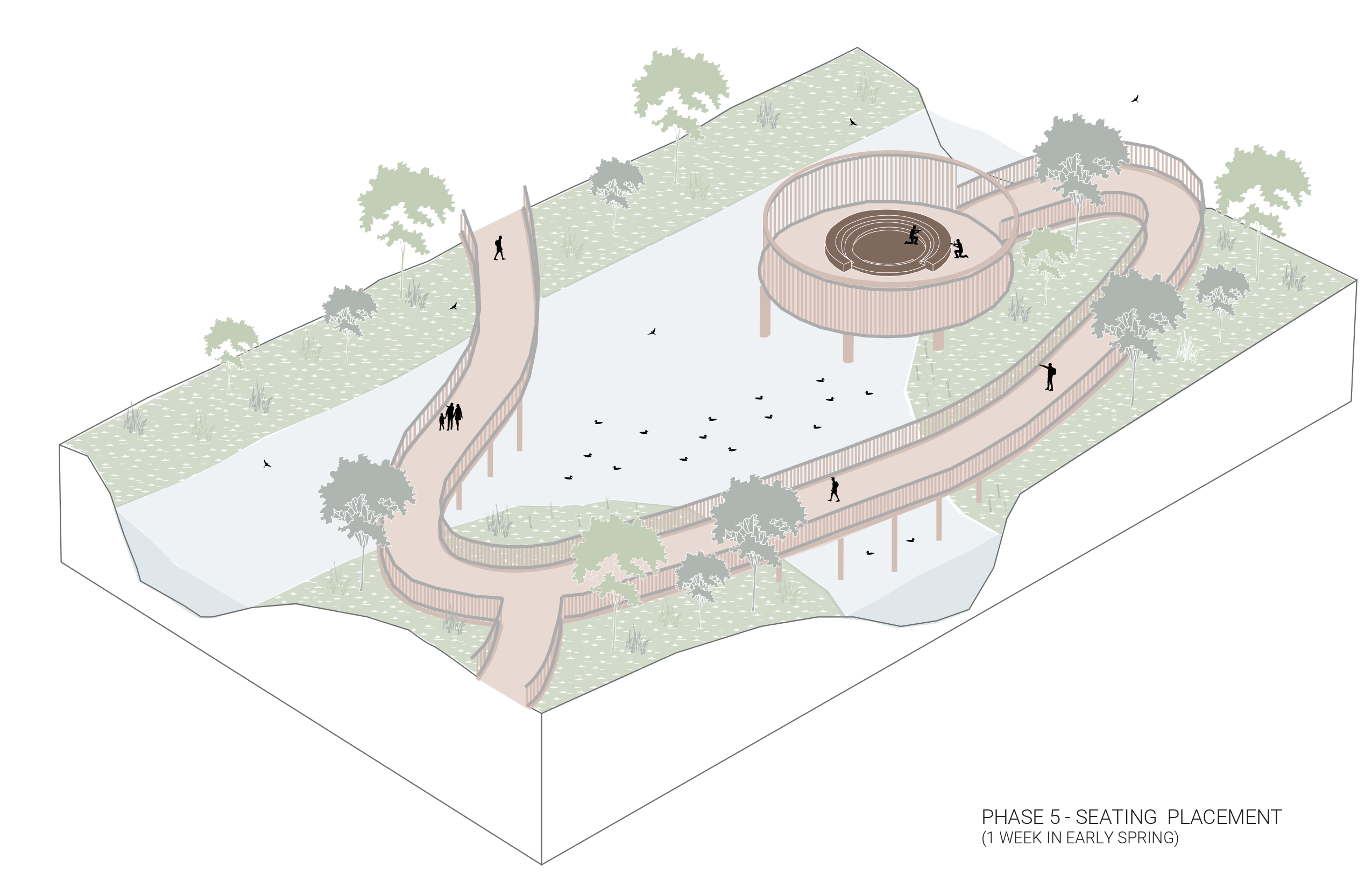
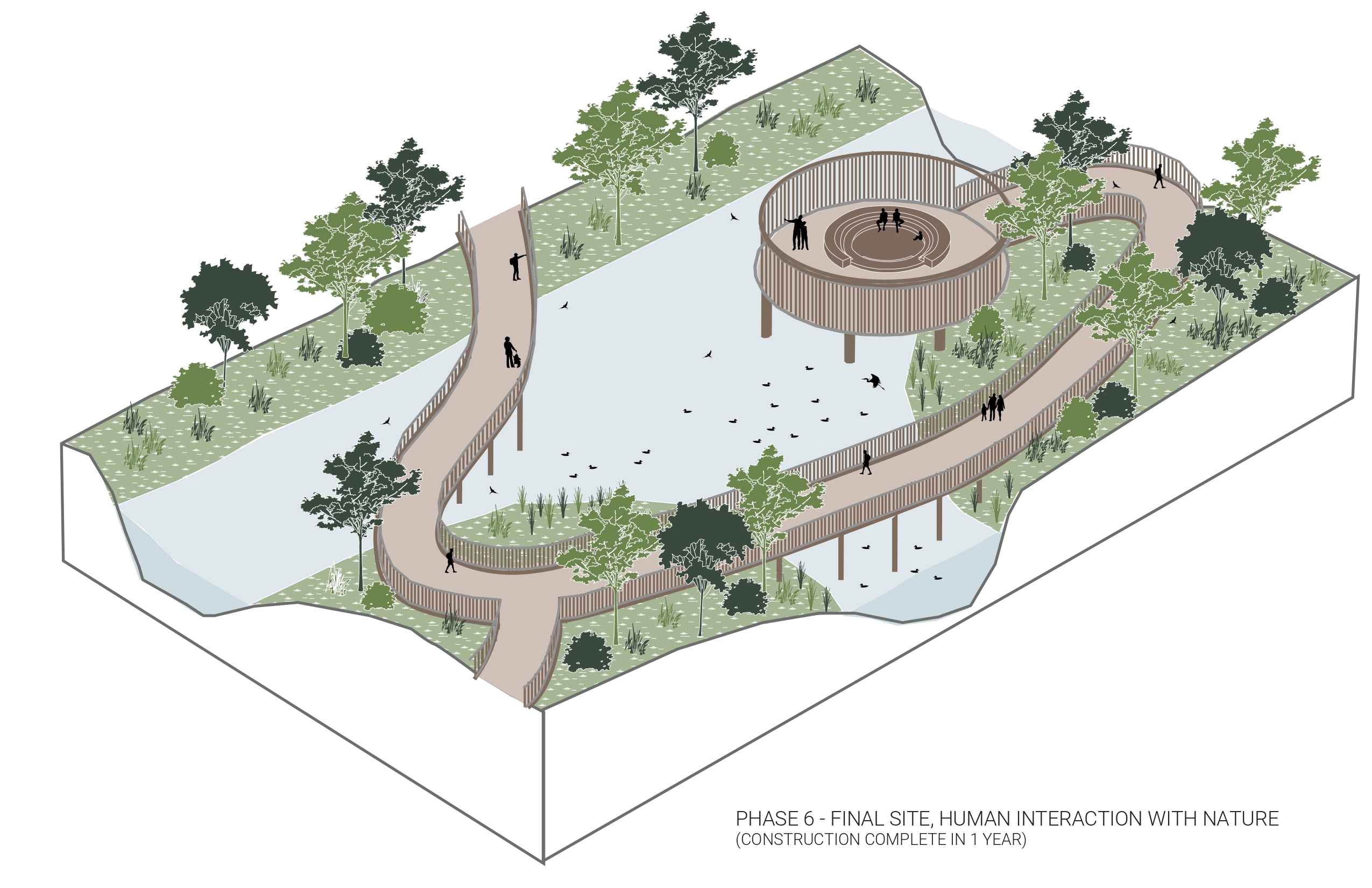

The isometric sequence unfolds the step-by-step implementation of our site design, showcasing the transformative journey towards projected habitat restoration that fosters a profound connection between humans and birds.



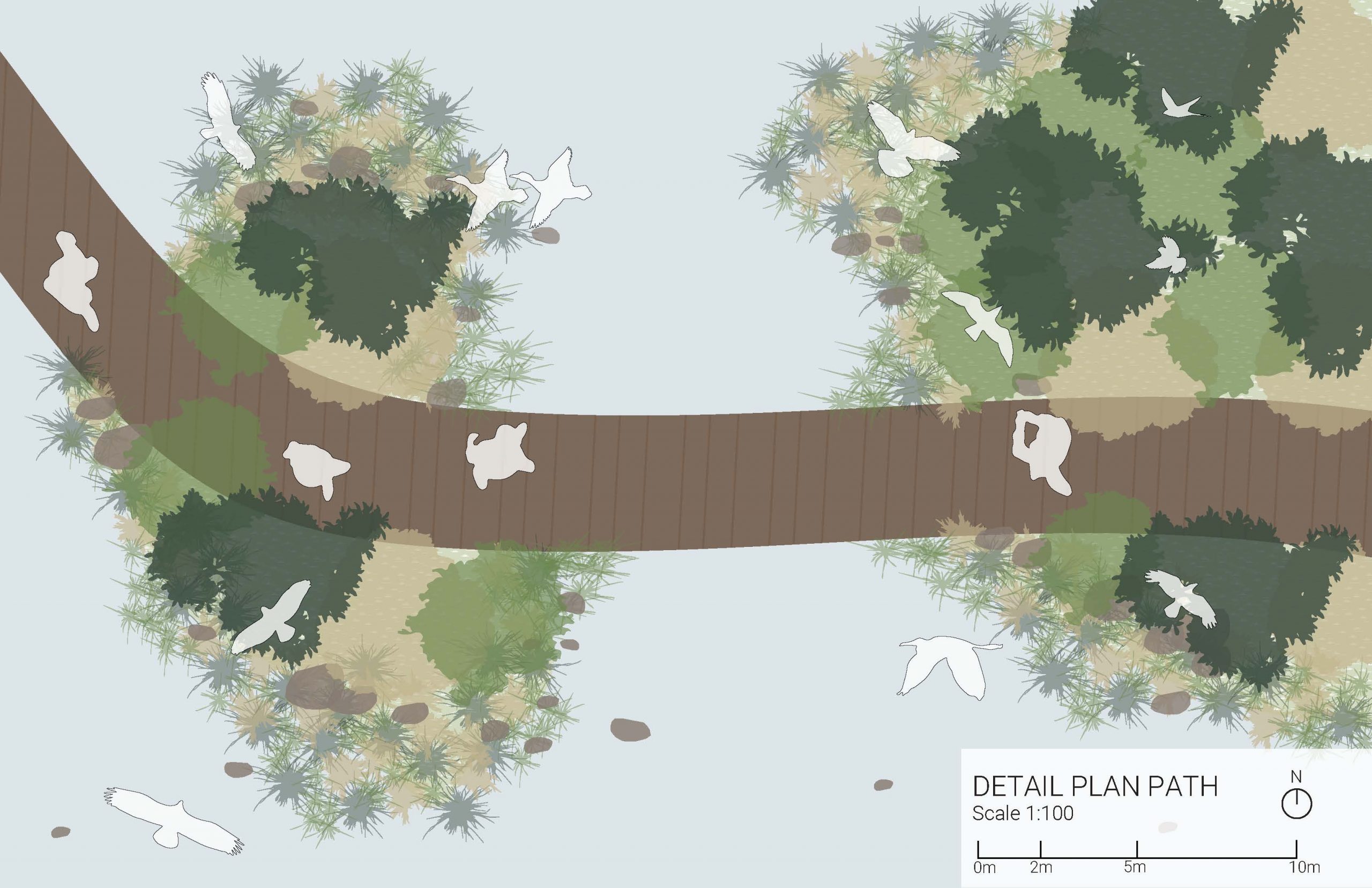
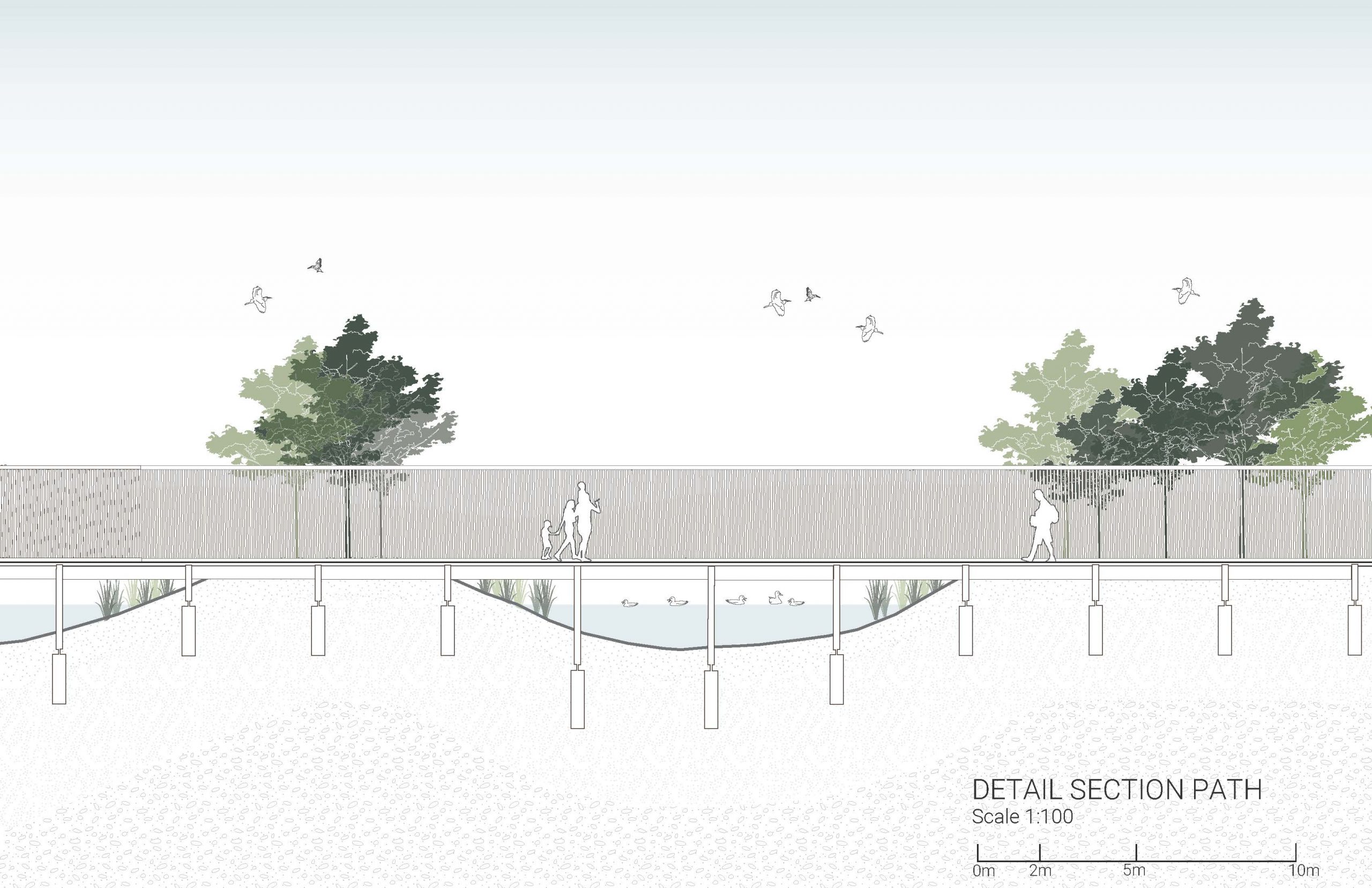

 These detailed depictions of the pathway, show both the form and construction with human usage while acting as an ideal vantage point for observing birds in their natural habitat. The composition of the bird blinds incorporates wooden blinds and steel top and bottom rails for stability.
These detailed depictions of the pathway, show both the form and construction with human usage while acting as an ideal vantage point for observing birds in their natural habitat. The composition of the bird blinds incorporates wooden blinds and steel top and bottom rails for stability.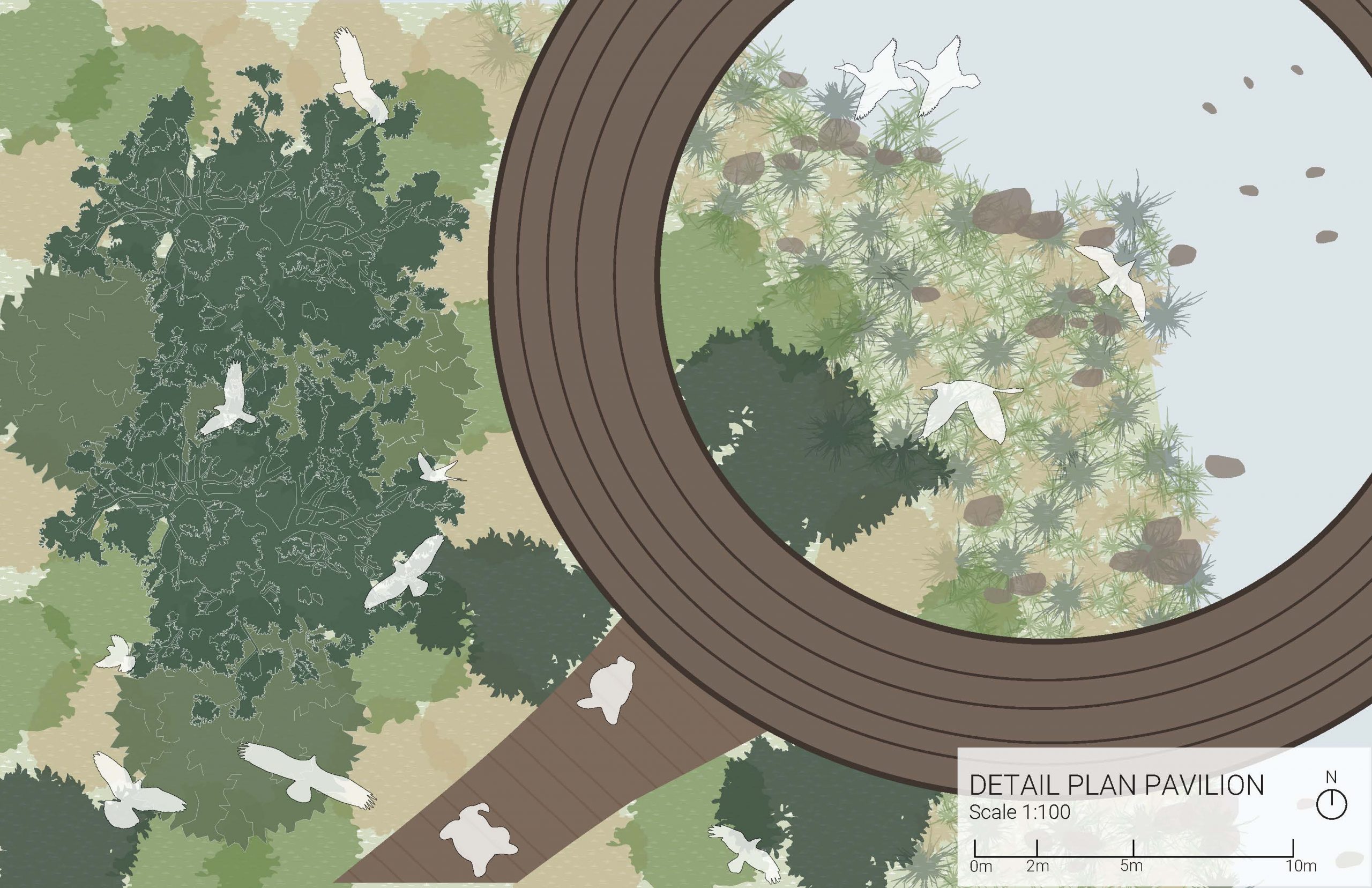


 These detailed depictions of the pavillions show both the form and construction while acting as an ideal vantage point for observing birds in their natural habitat. The construction methods applied within the pavilion are the same as those applied through the pathways and through the incorporation of wooden blinds and steel top and bottom rails for stability.
These detailed depictions of the pavillions show both the form and construction while acting as an ideal vantage point for observing birds in their natural habitat. The construction methods applied within the pavilion are the same as those applied through the pathways and through the incorporation of wooden blinds and steel top and bottom rails for stability.
